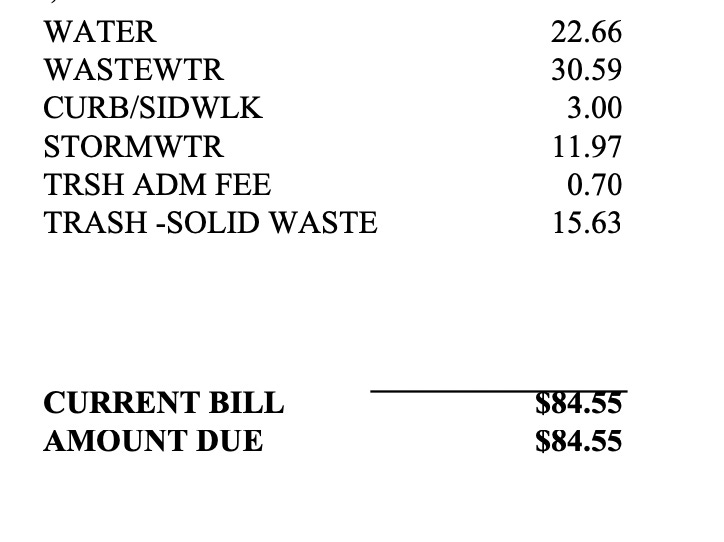
It's time to get up to date on water-related topics. If you’re new to reading my Substack posts I have a whole section about water. One post I orginally wrote for Nextdoor in 2021 details how new city employees discovered developers were getting what then City Administrator Fritz Sprague called a “smoking deal” on water rates for years. The council put an end to that practice. Since then city staff members have continued to bring forward information and potential actions to the last few councils. (Remember every two years we have an election and the makeup of the council changes). Council’s last action on water was to approve a 21% increase which we’ll be seeing on our February bill. I’ll write another post about that but first…
NUTSHELL BACKGROUND ON HOW WE GET OUR WATER
Nutshell explanation? Good luck Karen, Queen of Wordiness!
Here’s the deal. We get our water from melting snow in the mountains. It comes down to us via rivers, streams, creeks, ditches, and reservoirs. We purchase shares of this water, as do all the municipalities around us.
Spring comes and the snow starts to melt. The amount of runoff will depend on whether we had a heavy or a light snow year. With climate change happening the snow may melt so fast that it basically evaporates into the air before it even hits the rivers.
Since the water in rivers and creeks is moving and the snow melts in the spring we not only need to capture this water, we need to have a place to save it to use year-round. Hello, reservoirs. If we don’t have enough storage space, water that is ours is actually just flowing on by.
WHAT COMES NEXT?
We can’t drink water straight from the rivers, so we need to treat that reservoir water before it gets to our house. Plus it has to go somewhere after we flush, shower, and wash dishes. So we have a system of facilities in various locations around town that capture the water, process it, deliver it to our homes, move it out of our homes, clean it, and release it. I took a tour of these facilities last year and it was eye-opening and fascinating. I had a lot of OMG moments. I felt like a total nerd when I found myself saying “I’ve always wanted to see Goose Haven [Reservoir]” like any normal person would say “I’ve always wanted to see Paris”!
Check out the map below. See the red line? That connects where we collect our raw water in Baseline Reservoir, Goose Haven Reservoir, and Waneka Lake. There’s a green box toward the middle that shows the Baseline water treatment plant west of 287 where the water is cleaned and processed for delivery to our homes. The green box to the right is the wastewater treatment plant near Baseline on East County Line Road where the sewer contents wastewater that comes from our homes goes to be processed and released back into the wild, that being the creeks and rivers. I never thought about the details of this process so clearly until I took that facility tour, I encourage you to take it if there is one this year. It’s cheaper than a trip to Paris!
HOW WE PAY FOR ALL THIS
Most of our city services are paid for from the General Fund. The bulk of that fund is from sales taxes collected when anyone shops in Lafayette and to a lesser degree from property taxes. ( A quick shout out here: Shop Lafayette, Shop Lafayette, Shop Lafayette!)
Below is a chart from the 2024 budget book with some speech bubbles from me adding a bit more info.
Check out that water related section. We have three specific water funds, Water Utility, Water Reclamation and Stormwater that are called Enterprise Funds. The money in this type of fund must come from the users. I always point to the golf course which is also an Enterprise Fund to explain how they work. The golf course must be run as if it were a business with the users paying for all expenses. The residents of Lafayette who don’t golf, don’t pay for the cost of running the course. The city can’t move money from the general fund into the golf course fund because new golf carts or a larger clubhouse are needed. The same is true for the water funds, but in this case we are all users and you will see the three funds reflected individually on your water bill.
Image from the 2024 budget book
Here’s a screenshot of my last water bill. There are the three individual funds each collecting money that can only be used for a specific purpose. So if, for instance, we need to increase our water storage so we can save more water for a not rainy day we can only use money from that water utility fund. If there isn’t enough in the fund the city can either raise the rates of the users (that’s all of us) or go into debt thus costing us more money in the end. And this is what the last council had to deal with. Our water related needs cost more than the money going into the water fund can cover. In 2023 the council voted to raise rates mid year and also approved another raise for 2024. Stay tuned for my next post letting you know what to expect from that rate increase.






Well done, especially on the separate funds. The other reason our utility rates are going up is due to the federal mandates for clean water. There are stringent requirements for the water and wastewater treatment plants that require upgrades.
Great article! What's the source of the 2024 forecasted revenue image? I've been looking for this kind of data.